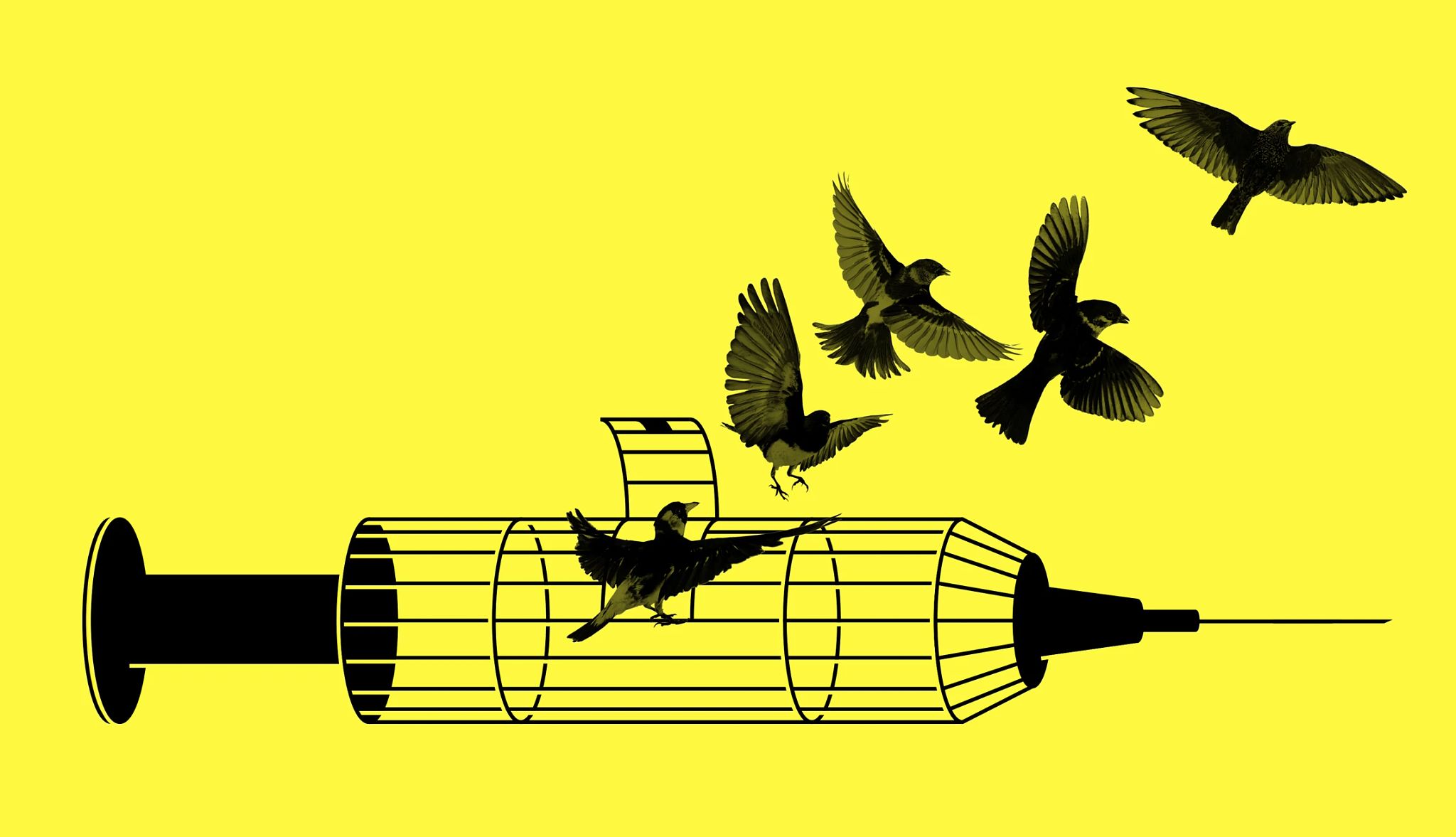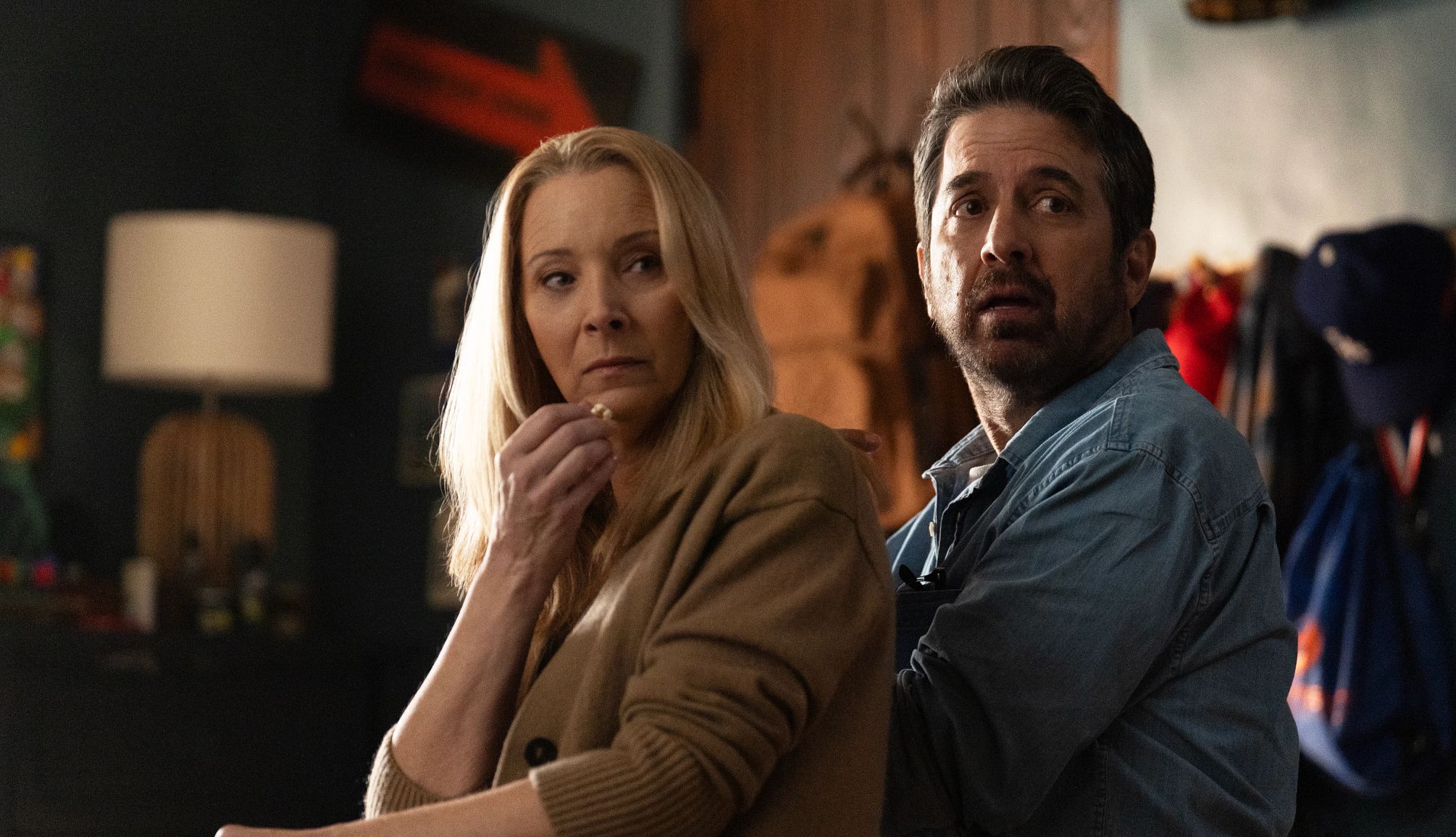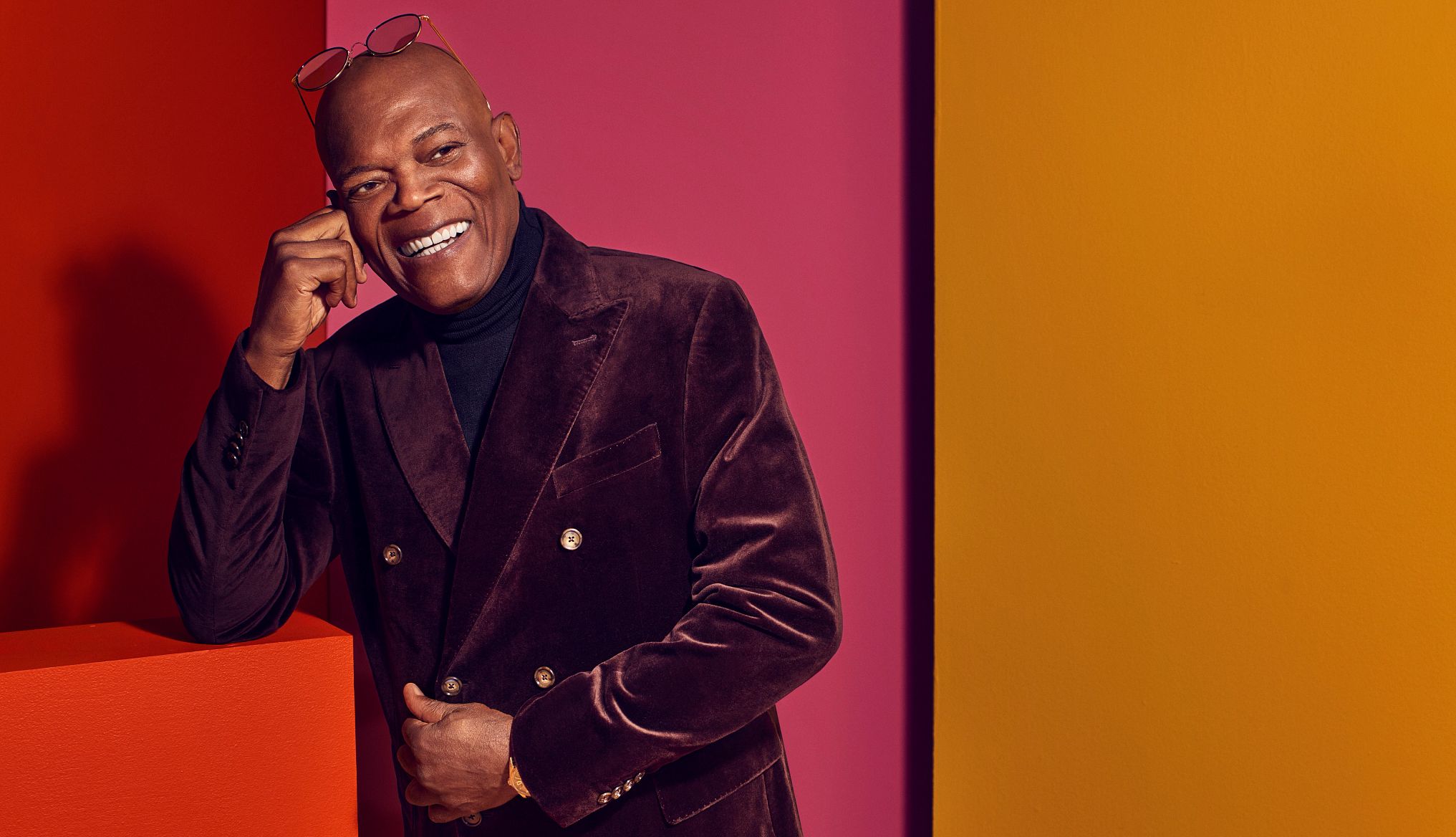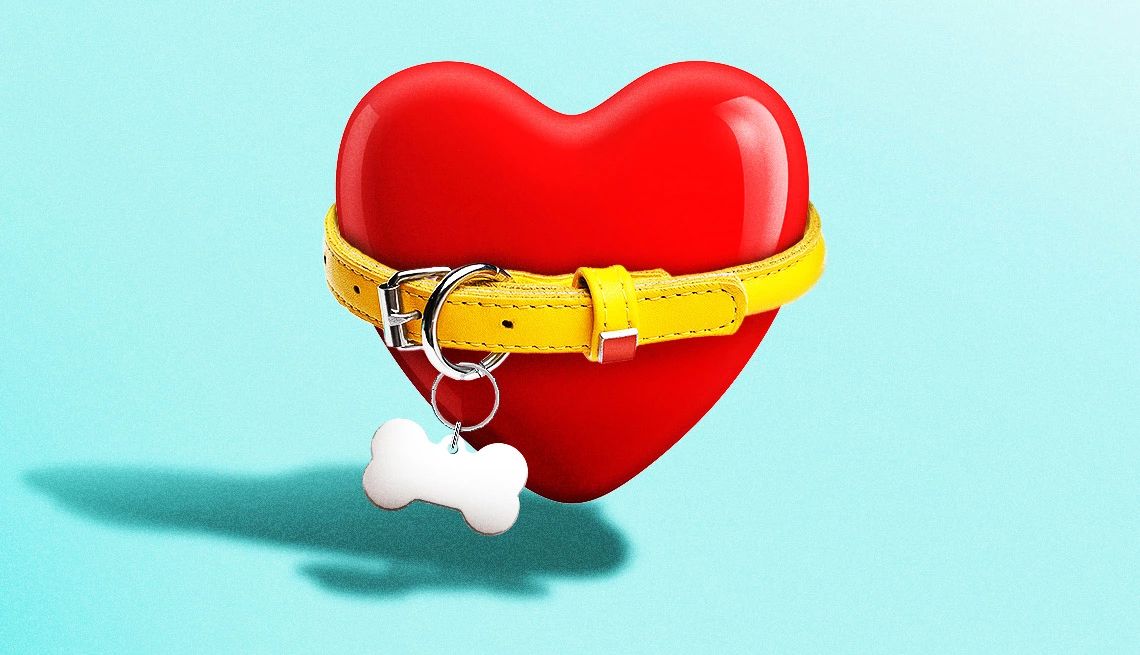Curiously, another thing De Niro seems reluctant to discuss is his immersive preparation process. He offers only a whatcha gonna do? shrug when I ask him about mastering the Sicilian dialect for his Oscar-winning turn as Vito Corleone in The Godfather Part II. (His Vito spoke only eight words of English in the film.) He is somewhat more forthcoming about learning the Osage language for Killers: “Well, my character was supposed to speak it well, so I got a great teacher, and we worked on Zoom.” A beat. “And that was it.” De Niro spent a year training under Jake LaMotta, the prizefighter he played in Raging Bull; LaMotta said that his protégé would have ranked among the 20 greatest middleweights in the sport’s history. “Eh,” De Niro responds. “He was just saying that.”
There is one aspect of his craft that De Niro is game to discuss, however. “Rhythm,” he says, leaning forward. “Every character has a certain rhythm to it, and you have to do whatever it takes to locate that.”
A rhythm that’s internal to the character, like a heartbeat — or a rhythm that’s created and shared by two or more characters?
“Both, but the second is more important. There is a rhythm to the way you and the other actors work together. You all pick up on each other’s rhythms and play off one another. This is so important to me.”
Once an actor dials into rhythm, he suggests, everything else — backstory, psychological complexity, motive — falls into place. “Sometimes you don’t know what motivates a character,” De Niro says. “Sometimes it’s easier when characters don’t know themselves.” And mastery of a character’s rhythm enables an actor to break free of his script and improvise. And improvisation, it turns out, plays a far larger role in De Niro’s craft than most people realize.
Robert De Niro photographed for AARP in New York City.
Photograph by Jim Wright
“A couple of years ago, I get this call: ‘Come down to Tribeca. You and Bobby are gonna meet in his office and read three scenes over Zoom for Barry Levinson in L.A.,’ ” recalls Debra Messing of Will & Grace fame. She eventually landed the role as De Niro’s 1950s younger mob wife in Levinson’s upcoming film, Alto Knights. “I went to town. I memorized and analyzed the s--- out of that script. So the day comes and I show up in period garb, with a Jackie-O updo and the red lipstick. Bob walks in wearing shorts and Crocs, takes one look at me and says, ‘Whaddya, going to a prom?’ Then we start. And three lines into the first scene, he starts to improvise. I’m like, Bob De Niro is improvising! What the f--- am I gonna do?
“He kept going outside of and back into the scene while I tried to keep up,” Messing continues. “I finally realized, This is how he does it — how he finds his character. He prepares and prepares and prepares — and then tosses it all away. Every scene we did was improvised. It was terrifying at first. But then I just became more open to trying things. How many times have you heard an actor gushing about ‘how much I learned from Robert De Niro,’ right? Well, this is what they’re talking about.”
Something doesn’t quite square here, does it? On the one hand, he is known as a man who lacks the gift of gab. At least half the stories written about Robert De Niro over the years have focused primarily on what a difficult interview he is — unself-reflective, brusque, calling interviewers and their questions “creepy,” and so on. (GQ magazine published profiles in 1991 and 2006 headlined, respectively, “15 Mumbling Minutes With Robert De Niro” and “And Now, 972 Words From Robert De Niro.”) That reticence helps explain how — despite his presence in our lives over the course of six decades and 115 movies — he has kept his mystery intact.
“Every other actor, I kind of know how they’d be in real life,” Billy Bob Thornton once remarked. “De Niro is the only guy I really have no idea.” Even Martin Scorsese — whose 10-movie director-actor collaboration with De Niro is the most fruitful in Hollywood history — has said he didn’t know “for years” that his friend’s father was a respected painter.
On the other hand, the world abounds with actors like Messing who have worked with De Niro and speak of him with an awe and sense of connection that borders on the religious. Leonardo DiCaprio calls him a “cinematic father figure.” The spaghetti Western director Sergio Leone said De Niro could don a personality as easily as he might don a coat.
Robert De Niro as Travis Bickle in "Taxi Driver."
COLUMBIA PICTURES/PHOTOFEST
What’s more, De Niro has had an enormous (and uncredited) screenwriting role in his most important work, including all 10 movies he’s done with Scorsese. Ream upon ream of dialogue, and this is a man who gets tongue-tied? The same man whose You talkin’ to me? moment before the mirror in Taxi Driver — among the most iconic in the history of cinema — was entirely improvised? While Killers of the Flower Moon was shooting, the industry press abounded with accounts of Scorsese, De Niro and costar DiCaprio furiously writing and rewriting their own lines on the set.
“He’s most comfortable in stream-of-consciousness mode where he can find his way to the most precise way of articulating something,” Messing says. To such a person, she adds, the rigid rhythm of an interview — one question, one answer, march on — might well feel like a “verbal straitjacket.”
Compare that dynamic to the one Martin Scorsese cultivates on his sets. “Of course, he offers direction,” De Niro says. He’s a director, after all. But far more important, De Niro continues, carefully choosing his words, “he orchestrates, he titrates.” That is, he attunes his actors to their all-important rhythms. “And that’s what gives you the confidence you need so that there’s no such thing as doing something wrong.”
He eyes his watch. Message received: last question. I start in, then realize I’m not so much asking him a question as dumping something in his lap. It’s just that … there are certain performing artists who are so transcendentally good over such a long period of time that they come to feel important to you — personally so. (Talkin’ to you, Bobby Milk.) Their performances, cumulatively, take on the weight of memory, compelling you to recall your own life and self — who you were with and what you felt the first time you saw The Godfather Part II, Taxi Driver, The Deer Hunter, Raging Bull, The Untouchables, Casino, Heat, The Irishman, Killers of the Flower Moon. Trying to formulate a question from this, I ask De Niro how he thinks he’s changed and grown, as an actor and a man, in the 50 years since he and Martin Scorsese shook up the cinematic world with 1973’s Mean Streets.
“I’ve learned how not to worry or tax myself too much,” he says with a shrug. “I like to just let things happen.”
(Left to right) Robert De Niro as Max Cady in "Cape Fear" and as Vito Corleone in "The Godfather Part II."
Universal Pictures/Photofest; Mary Evans/Paramount Pictures/Ronald Grant/Courtesy Everett Collection
5 Things You Didn’t Know About Robert De Niro
De Niro was originally picked for the Tom Hanks role in Big.
The actor was set to play Josh Baskin in the 1988 hit comedy that catapulted Tom Hanks to film stardom. Director Penny Marshall even shot test video of De Niro skateboarding, riding bikes and shooting baskets. But De Niro dropped out before filming began because, he said, “we had a thing, an issue, with the negotiation, so it went the way it went.”
He ruined his teeth for Cape Fear.
For his role as a violent rapist in the 1991 psychological thriller, De Niro paid a dentist $5,000 to grind his teeth down to make them look sharper and his character look more evil. When filming ended, he paid the same dentist $20,000 to repair them.
He loves casting his oldest daughter in his movies.
Drena (his first wife Diahnne Abbott’s daughter from a previous relationship, whom De Niro adopted) has appeared in at least nine of his films, including The Intern, The Adventures of Rocky & Bullwinkle and City by the Sea.
De Niro is immortalized in an ’80s pop tune.
All-girl British pop group Bananarama released the hero-worship single “Robert De Niro’s Waiting …” in 1984. It reached number 3 on the U.K. singles chart and stayed there for 12 weeks.
He and Marlon Brando are a rare pair.
They are one of only three sets of actors to win Oscars for playing the same character. Both played Vito Corleone in the Godfather films — Brando in 1972, De Niro in 1974. Rita Moreno won for playing Anita in West Side Story in 1962; Ariana DeBose won in 2022. In 2009, Heath Ledger posthumously won for playing the Joker in The Dark Knight; Joaquin Phoenix won in 2019 for Joker. —Natasha Stoynoff

































.jpg?crop=true&anchor=13,195&q=80&color=ffffffff&u=lywnjt&w=2008&h=1154)






































More From AARP
Ringo Starr on New Beatles Song: It’s ‘a Nice Way to Finally Close That Door’
Sixty years after Ed Sullivan, the Beatles’ heartbeat holds forth on moptop mania, broccoli — and hope springing eternal
Henry Winkler’s 6 Lessons of Reinvention
‘The old Henry got me here, but the new Henry is more fun!’ says the former Fonz, on a career roll
Sheryl Lee Ralph: ‘My Life Has Been About Preparing For Longevity’
The ‘Abbott Elementary’ star has been sharing her wisdom — and crafting a life of joy
Recommended for You